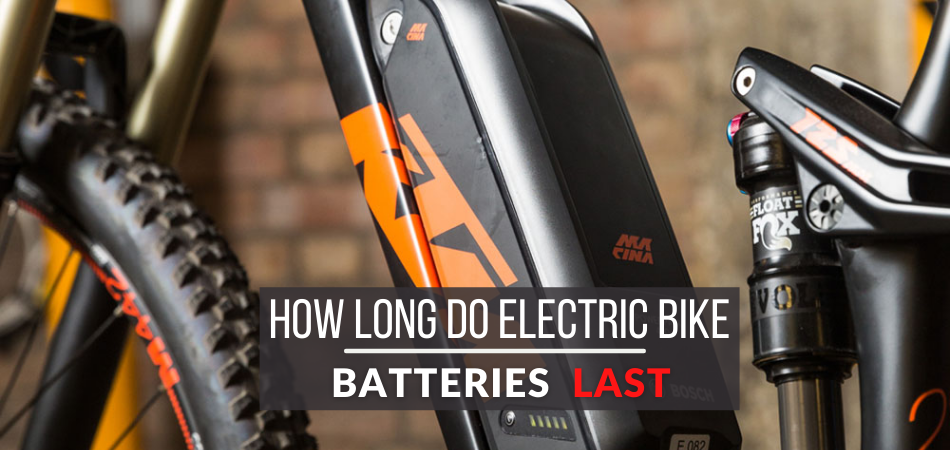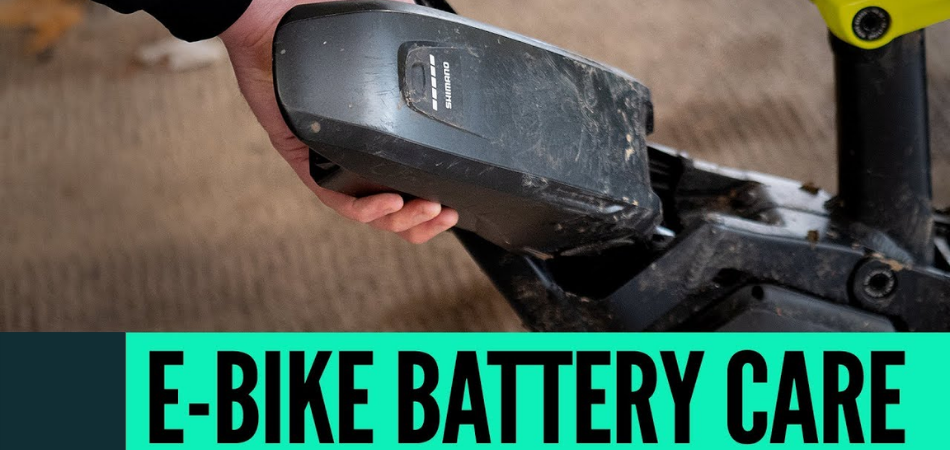Imagine your brain stops receiving oxygen supply! How long would you survive, you think? Similarly, the battery of an e-bike is a source of power. When the battery is down, the controller or the brain of the e-bike is down too. So, knowing how long do electric bike batteries last determines how frequently you need to replace or purchase a new one.
An electric bike battery lasts between 2 to 4 years if properly maintained. The lifespan of an electric bike battery is usually determined by: age of the battery, type of the battery, and charge cycles (the number of times the battery has been fully charged and drained during its lifetime).
Despite the fact that you can ride your e-bike by pedaling like a regular bike it never reduces the usage of battery. The reason behind it is that people who own an-ebike barely tend to ride it by pedaling. The controller controls all the critical aspects of an e-bike and the battery is the controller’s power source. Since the battery is in continuous action there are always concerns of its replacement.
Therefore,this article turns out all the stones regarding electric bike batteries: how long they last, when you should replace them, and essential tips on how to take care of your electric bike battery.
How Long Do Electric Bike Batteries Last?
There’s no doubt that a battery is a vital organ of an electric bike; It is literally worth approximately a third of the entire bike’s value. Whether you are a versatile or new ebike user, it is imperative that you understand the nitty-gritty of electric bike batteries and also know how to take good care of them.

A battery’s lifespan is usually calculated in charge cycles. A charge cycle is one complete full charge, 100%, and let it completely drain, 0%. An electric bike battery is built to undergo hundreds of charge cycles; thus, its life expectancy is anywhere between 2 to 4 years.
Different electric bikes have various battery capacities. There are bikes with a 36V 10Ah 500w battery capacity, mostly for light riders. Others like ebike for tall riders have higher capacity batteries, 48V 1000w battery capacity. You’ll notice that these batteries are not the same and have different power outputs.
Remember, how you take care of your ebike battery has a significant impact on its life. For instance, keeping your ebike battery in a cool and dry place and well protected from heat and temperature fluctuations will help it last longer.
Different Types of E-bike Battery
Another key factor that significantly determines the life expectancy of an electric bike battery is its type. There are three major battery types used in electric bikes, and each of the three has its own lifespan.
Lithium-ion batteries
Lithium-ion batteries have been in existence since 1912—these batteries power about 90% of e e-bikes in the market today. Most Manufacturers prefer Lithium-ion batteries since they produce more power. They are light in weight as opposed to other battery types available, and most importantly, they last longer.

There are three main classes of Lithium-ion batteries, which are: Lithium-ion Polymer (Li-pol), Lithium Manganese (LiMg204), and Lithium cobalt (LCo). In general, all different forms of lithium-ion batteries have a high capacity compared to any other battery type in the market.
Nickel Batteries
Compared to Lead-acid batteries, Nickel batteries have a higher capacity per pound. However, they are more expensive than lead-acid. Nickel batteries have an improved life expectancy but are difficult to recycle and dispose of. For this reason, they are slowly becoming obsolete.

Nickel batteries have shown a tendency of self-discharge, i.e., after a complete full charge and no use, these batteries can discharge by as much as 70% in 24 hours. Worth noting, nickel batteries have a terrible density of electricity. Irrespective of their cost, they are not a recommended option for battery type.
There are two different types of Nickel batteries: Nickel-Cadmium (NiCd) and Nickel-metal Hydride (NiMh).
Lead Batteries
Lead-acid batteries were introduced in the 1800s. These types of batteries are cheap and easy to recycle. Lead-acid batteries are quite heavy and produce a much lower power output. They are the heaviest type of battery for electric bikes, three times heavier than lithium batteries and twice as heavy as nickel types.

Additionally, they have very low capacity. The maximum capacity of a Lead-acid battery is half that of a Nickel or lithium battery. Even though this type of battery is among the earliest and does not perform better, technology has evolved, and more high-performance batteries have since hit the market.
When Should I Replace My Electric Bike’s Battery?
Like I said before, electric bike batteries last for 2 to 4 years. But that doesn’t necessarily mean the battery will suddenly die off if you don’t replace it in four years. So, when should you replace an old e-bike battery solely depends on the battery condition.
All Manufacturers strive to design and build electric bike batteries that can serve you for the longest time possible. A new battery should take you thousands of miles before you think of replacing it. Whether your battery no longer holds a charge anymore, you need a new battery that offers more power, or you suffered a crash that damaged your battery, it gets to a point where you have to replace your e-bike’s battery.

Some bikers tend to think when their electric bike battery dies; they have to buy a new bike. This is not the case. Replacing your ebike battery is a rather simple task to do, as long as you do it as recommended by the manufacturer. You do not have to throw away your electric bike to buy a new one just because the battery won’t hold a charge or is completely damaged.
Tips To Take Care Of Electric Bike Batteries
As aforementioned, the battery is a key component of an electric bike. It affects the duration and speed of your ebike. Having a good battery installed on your electric bike greatly affects its efficiency and also determines the distance you can cover on a single full charge. This is enough reason to take care of your electric bike battery.

- Storage: Always store your ebike battery in a cool and dry place. Avoid keeping them in high-temperature areas or near a heat source.
- Charging: It is good practice to always charge your battery using the manufacturer-provided charging adapter. It is designed to protect your battery against short circuits and overcharging.
- Discharging: It is recommended not to fully discharge your electric bike battery regularly. Avoid draining your bike to 0%.
- Cleaning: Electricity and water are not the best of friends; they don’t get along well. So, before cleaning your ebike, always pull out the battery first. When cleaning your battery pack, wipe it with a damp (not wet) cloth. Do not immerse your battery in water.
- Do Not Store a Completely Empty Battery: In the event that you may need to ground your electric bike, for example, you are going on holiday, and you will not need your bike. Have your ebike battery charged halfway; anything between 40% to 70 % is perfect.
- Do Not Overcharge: Do not keep your electric bike charging overnight even if it is already at full charge, 100%. This creates a situation where your battery will discharge, affecting its maximum capacity.
Final Thoughts
Proper storage and maintenance of your electric bike battery, as discussed above, will significantly prolong its lifespan. If you have read this article, you definitely have a broader understanding of different types, how long do electric bike batteries last, and tips on how to take care of them. A well-maintained electric bike battery will give you about 50 to 70 miles of ride distance on a single full charge. However, if you are riding on full power, expect fewer results.
Your ebike battery will inevitably deteriorate with time and need replacement at some point. So, when replacing your old electric bike battery, ensure you get a good quality battery recommended by the manufacturer. At this point, you know the types of batteries for an electric bike that are available, and you can choose the best for your bike.
Remember to keep your ebike battery half charged if not in use. Most retailers recommend charging your electric bike battery once a month if it’s not ridden much. Energy stored in ebike batteries usually escapes. This is a process called self-discharging. If the electric bike battery is left completely discharged for a prolonged time, chemical reactions inside the battery may cause irreparable damage.

